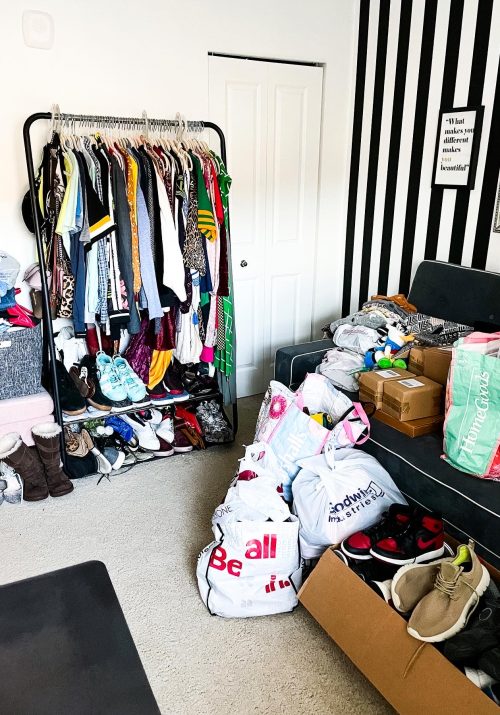
Have you ever wondered what differentiates buy-sell-trade, thrift and consignment stores from one another? Although these words are closely associated to each other in the reselling world, they have some significant differences. Today, I wanted to share with you a basic overview outlining the differences between buy-sell-trade, thrift, and consignment stores.
The Main Factors That Differentiate Reselling Business Models:
1) When the owner of the item(s) is paid
2) If someone else is assisting to sell the item(s)
3) When ownership of the item(s) is relinquished
Consignment
Consignment describes a business model where someone else comes in and sells the owner’s item(s) for them. The owner of the item retains ownership of the item until it sells. The seller then receives a small payment for selling the item(s) for the owner. When it comes to consignment, there are 2 different models.
Consignment Shops
These are locally owned businesses that set their own consignment terms. Usually, they will list an item for 30-60-90 day cycles and if the item doesn’t sell, they will either discount the item or return it to its’ owner. If the item sells, the consignment shop will typically receive a certain percentage of the sale. These stores typically have a smaller supply of inventory and less foot traffic.
Consignment Sales
Consignment sales are usually pop-up style events that typically last for a few days and are very intense in nature. These events are usually held by an organization in a large venue. Many people bring their items to these events resulting in high inventory and high energy. Usually, the seller will prepare their items for the sale ahead of time, drop them off at the venue a few days before the event and then either pick-up or donate any unsold items after the event is over. The payout for these types of events in typically 60% of the sale price as a base rate and the sellers are also required to pay an entry fee.
Thrift Stores
Thrift stores typically operate on donations but there are some stores that work directly with non-profit organizations. People will drop their donations off at the store and receive a tax-deductible receipt reflecting the value of their items. Ownership of goods is relinquished once the owner drops off the items at the store. The prices of the items in-store are decided solely by the store’s employees.
Examples of Thrift Stores Include: Salvation Army, Goodwill, Savers
Buy-Sell-Trade Stores
Buy-Sell-Trade stores are businesses that allow customers to bring in their items for an immediate cash payout. Each store will set their own policies for what items are accepted into the store and what the buyer’s payout percentages are. These stores are very popular with people who are looking for quick cash as items are typically processed and paid out within the same day. Ownership of goods is relinquished when the buyer is paid for the item(s) by the store. Once that happens, the store is responsible for selling items and setting their own prices. The store is taking a risk as they are pre-paying the owner for items without guarantee that they will sell.
Examples of Buy-Sell-Trade Stores: Plato’s Closet, Buffalo Exchange, Once Upon a Child, Style Encore, Uptown Cheapskate
I hope that you found this post helpful! Be sure to check out THIS post for more reseller tips!
If you don’t already, be sure to check out my Instagram for more Reselling Tips at @ RecycledRosesGuide (Click HERE) and my Facebook page HERE.
You can instantly shop all of my looks by following me on the LIKEtoKNOW.it shopping app HERE.
To get email notifications for my next blog post and to receive my monthly Reseller Recap (with freebies), sign up for my emails below:
Baci,



